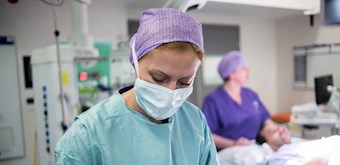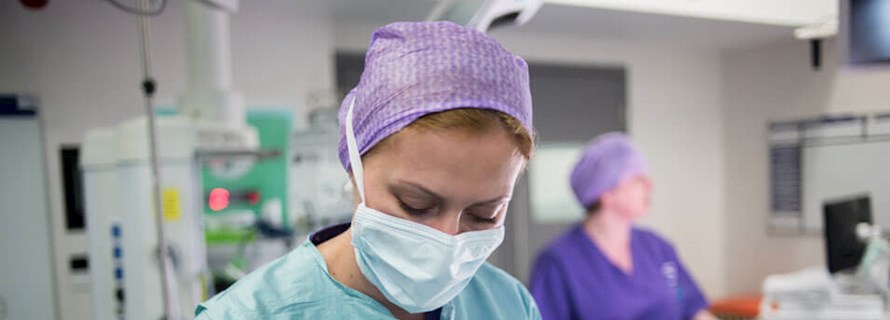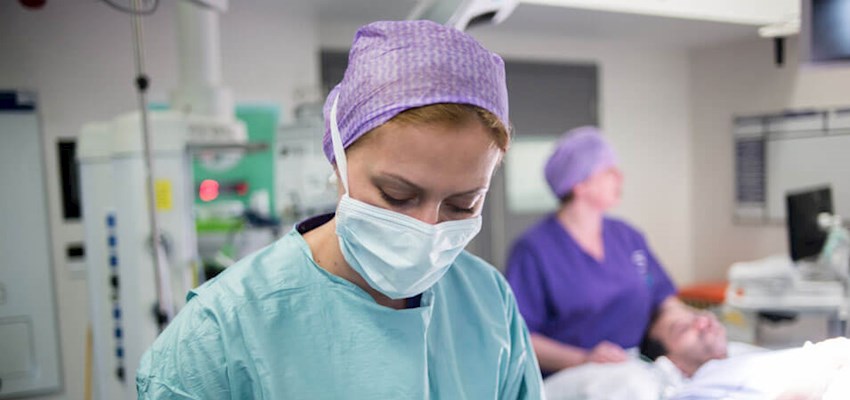Paediatric inguinal hernia repair
Groin hernia surgery for babies and children
Our experienced paediatric surgeons treat groin hernias in children of all ages, from premature infants to adolescents
What is an inguinal hernia in children?
Inguinal hernias in children happen when the passage in the inguinal canal — the groin area between the abdomen and the genitals — doesn't fully close after your baby is born, leaving a weak space in their tummy muscles.
A section of bowel can push through this weak space, creating a lump called a hernia.
A section of bowel can push through this weak space, creating a lump called a hernia.
Types of hernia repair
Laparoscopic primary repair of an inguinal hernia (one side)
Depending on the size and complexity of your child's hernia, your surgeon may be able to repair it using a laparoscopic (keyhole) operation. This type of surgery is done through very small cuts in your child's tummy, using specialised surgical instruments guided by a tiny operating camera.
Laparoscopic primary repair of an inguinal hernia (both sides)
Sometimes your child may have a hernia on both sides of their tummy. This is know as a bilateral hernia. Depending on your child's age and the complexity of their hernia, it may be possible to repair a bilateral hernia with a keyhole procedure.
Open primary repair of an inguinal hernia (both sides)
Bilateral inguinal hernias usually require open surgery to fully repair a child's hernia. Open surgery involves cutting along the groin area, allowing your surgeon to remove the hernial sac and reinforce the surrounding muscles to help prevent the hernia from coming back.
Need to know
-
What happens during surgery? icon plus
Inguinal hernias will not go away on their own and can cause serious complications, so surgery is generally recommended. Your consultant paediatrician will explain whether open or laparoscopic (keyhole) surgery is the best approach for your child. The procedure is usually done under general anaesthetic, meaning your child will be asleep.
Your surgeon will either repair the hernia through several tiny cuts (keyhole) or one longer cut (open) along your child's groin area. They will then close any weak spots in the surrounding tummy muscles using strong stitches. The whole procedure usually takes between 30 minutes and an hour in theatre. -
How to prepare icon plus
Your consultant paediatrician will explain the procedure to you and answer any questions you may have. Because your child will be having general anaesthetic, they will tell you how long your child will need to avoid eating and drinking beforehand.
Like all procedures, there may be some risks and side effects involved. Your consultant will explain these to you. -
After surgery icon plus
Your child should be able to return home on the same day as their surgery. Sometimes very young children are cared for in hospital overnight. There is likely to be some bruising and swelling or tenderness in the area for about a week following the procedure.
Your consultant may recommend pain relief medication, including paracetamol or ibuprofen, to help keep your child comfortable.
Your consultant will also let you know when your child can get back to their usual routine including school or nursery.
Our paediatric hernia consultants
We're proud to work with leading paediatric surgeons who are experts across a range of medical fields, and whose skills are matched by their integrity and compassion.




Our locations
From complex gastric surgery in children to diagnostic test, scan and minor procedures, we provide exceptional paediatric surgical care across our network of hospitals, outpatient centres and specialist clinics.
Request an appointment with a paediatrician
To request an appointment, call the paediatric unit on the number below.
020 7390 8020
This content is intended for general information only and does not replace the need for personal advice from a qualified health professional.